Al-Qaeda in the Arabian Peninsula has gained a new sense of empowerment from its relations with ISIS.
The Yemeni army launched military operations in the southern provinces of Abyan and Shebwa on April 28, in order to thwart the resurgence of al-Qaeda in the Arabian Peninsula (AQAP) and its affiliate, Ansar al-Sharia (AAS). The offensive followed a series of events, including a major AQAP gathering following a prison break and a US drone strike campaign over the Easter weekend. The outcome of ongoing battles will shape the security environment for months to come, posing monumental challenges during the post-conflict period, and influence Yemen’s relations with vital regional and international partners.
As of April, President Abdo Rabbo Mansour Hadi appeared to have nearly exhausted his leverage with regional and international partners supporting his political transition plan, and has given into pressure to focus on the deteriorating security situation, at the expense of a deepening economic crisis and political stalemate in Sana’a. Evidence of mounting pressure surfaced as Saudi Arabia labeled the Muslim Brotherhood and the Zaydi-Shia Houthi rebels as terrorist organizations. Caught between regional rivals — Qatar and Saudi Arabia — who provide the largest portion of foreign aid to Yemen — and Western partners, securing much needed political support at the United Nations Security Council (UNSC), Hadi is now forced to shape an acceptable security environment that balances domestic politics and international relations.
The president must also deal with violent clashes between political rivals in the north and an unwavering secessionist movement in the south. Threats posed by AQAP are part of a myriad of challenges faced by Yemen’s transition government. The inability to address simultaneous challenges to Hadi’s authority is a direct consequence of a weak coalition government engulfed by legacy conflicts. The conflict between Zaydi-Shia Houthi rebels and tribal militias loyal to al-Islah are far more complicated than mere images of sectarianism. The secessionist movement (Hirak) remains peaceful but fractured, while the potential for escalation to violence remains.
Deteriorating Security
A deepening security vacuum has been exacerbated by further evidence of AQAP’s persistence and ability to expand operations and counter the US-led drone campaign. In March, AQAP claimed responsibility for a prison escape freeing 29 known militants from the capital city’s central prison. The escapees later appeared in a video published by al-Malahem on March 27, which included a speech by Nasser al-Wuhayshi, the emir of AQAP. The prison break in Sana’a served to replenish the organization’s ranks with experienced militants. It also sent a strong warning to Hadi’s government and the US as nearly 200 militants remain inside the political security prison (PSO) in Sana’a.
Evolving relations between the Islamic State in Iraq and the Levant (ISIS), now known as the Islamic State, and elements within AQAP potentially present Hadi and the US with a new set of challenges.
The frequency of brazen attacks by AQAP have increased since US intelligence purportedly intercepted messages between al-Wuhayshi and Ayman al-Zawahiri in August 2013. Mid-level losses among AQAP’s “rising stars,” resulting from nearly 100 US-led surgical strikes across Yemen, caused the group to escalate operations, not only to remain relevant but also to benefit from the expanding security vacuum. Recent figures published by Yemen’s government have showed the group still relies on a large number of Yemeni and foreign fighters, in addition to mercenary assets within AAS. Yet the current pace of military operations in Abyan and Shebwa proves AQAP has suffered from its own success as the number of battle-ready elements depletes.
The exact number of militants in the country remains a point of contention for analysts and the governments of the US and Yemen. The estimates produced regarding the group’s members and sympathizers were simply based on casualties from operations until 2011 — estimates from videos of training camps and discussions on jihadist online chat rooms. Yemen’s foreign minister, Abu Bakr al-Qirbi, was the first official to publicly announce an estimate in 2010, when he claimed about 400 militants in Yemen were loyal to al-Qaeda. Not until the rise of AAS in 2011 did anyone imagine AQAP to have followers in the thousands. The expansion of AAS, which at best has an internally incoherent foundation, may lay in the hands of a new generation with weak ideological links, but shared interests with its patron, AQAP. AAS’ localized priority is to grab power and create safe havens for a patron with global ambitions.
As Yemen’s government claimed a number of victories in Abyan and Shebwa, AAS launched a number of well-coordinated attacks in Hadhramawt governorate. As early as March, a month before the US drone campaign escalated, AQAP claimed an attack on a military checkpoint. Sources indicated that AAS militants in the eastern province carried out the attacks. Later in May, nearly a month after the military offensive began, Jalal Bil’ayd, AAS’ emir, spearheaded simultaneous attacks on a military post, a number of banks and a museum in the center of Hadhramawt’s second largest city, Sayyun. Bil’ayd, who was thought to be hiding in the Maraqasha mountains of Abyan in April, was featured in a number of pictures taken in Sayyun, which were published online on the evening of the attack. The significance of this operation was that it illustrated AAS’ persistent ability to launch effective operations, while the military claimed victories in Abyan. It also sent a strong message regarding Bil’ayd’s freedom of movement.
AQAP’s Evolution and Ties With ISIS
The morning of June 26 witnessed another well-coordinated AAS attack in Sayyun, this time on the city’s airport and a government telecommunication’s office. Such attacks not only prove the resilience of militants, but also add to challenges faced by President Hadi’s government. The evolution of AQAP since 2011 and the role played by AAS now present a clear threat to the survival of the political transition, representing a widespread insurgency similar to events in Iraq and Libya. In early 2012, Yemen-based journalist Hakim al-Masmari described AQAP’s strategy as changing from holding safe havens to guerrilla tactics. AAS, at times believed to act under AQAP and others independently, according to journalist Abd al-Razeq al-Jamal, is definitely a local actor with local ambitions, a phenomenon not seen in Yemen since the Islamic Army of Aden-Abyan (IAA-A) last operated in 2003.
Furthermore, the US still views AQAP as “the most active operational franchise” of al-Qaeda, the global jihad organization; a view supported by the August 2013 alert in Sana’a and the most recent warning to airlines of a possible bomb threat. AQAP’s resilience has certainly added to Yemen’s transition problems, as well as to the challenges to close the security vacuum created by an unprecedented breakdown in government authority and capability to enforce law and order throughout the country.
Political conflicts have also created an environment of distrust in Hadi’s government, as well as weakened the government’s ability to address public needs such as access to water, electricity and shelter for displaced persons. As a consequence, AQAP and AAS have been able to expand relations with local clients, providing safe havens throughout Yemen. Hadi’s failure to improve the efficiency of government services, and his weak political position also impede necessary efforts to gain allegiance of tribal elements that aid and harbor militants. The US also finds itself in a difficult position as the Obama administration has extended unwavering support to Hadi during the transition period, while acknowledging his weaknesses concerning the ability to pursue militants with existing military and intelligence capabilities.
A potential split within AQAP not only poses new challenges to Yemen’s neighbors, the US and President Hadi, but would also create a new dynamic within the global jihadist movement as al-Zawahiri holds onto its leadership in the post-Osama bin Laden-era, while ISIS gains further support from jihadists in Yemen, the Caucasus and Southeast Asia.
Efforts to target AQAP’s upper echelon — Nasser al-Wuhayshi (named general manager of al-Qaeda), Ibrahim al-Asiri (expert bomb-maker) and the likes of Makmun Abdul Hamid Hatim (spiritual leader of AAS) — are hampered by politicized intelligence agencies under Hadi and weak US human intelligence (HUMINT) capabilities. Hadi’s acquiescence mainly to pressure from Saudi Arabia and the US, partly to agree to American drone strikes, primarily extends from the fact that AQAP has made it a priority to target government facilities and officials, and AAS has evolved from an insurgency group in Abyan to a national threat to wider stability.
The transitional president made clear that AQAP is an enemy of the state, and his cooperation with regional and international partners simply serves his own survival. America has also been hampered by the lack of options beyond drone operations, as it can neither commit extensive troops on the ground, nor can it simply rely on intelligence provided by Yemen’s intelligence apparatus or Saudi Arabia.
The Islamic State
Moreover, evolving relations between the Islamic State in Iraq and the Levant (ISIS), now known as the Islamic State, and elements within AQAP potentially present Hadi and the US with a new set of challenges. Any gains made against AQAP in Abyan and Shebwa since late April may be reversed by the organization’s new sense of empowerment from its relations with ISIS, as well as financial and material support from this ambitious jihadist group in Iraq. AQAP’s evolution since 2009 has illustrated an ability to advance transnational threats against Western interests, as well as the ability to engage a local strategy that delivers safe havens to host training camps, recruiting propaganda for foreign militants, and space to develop plans such as the attempted assassination of Prince Mohammed bin Nayef in Saudi Arabia, and the attempted bombing of a Detroit-bound airliner in 2009. Further evidence of the group’s success include a number of attacks on government facilities, namely the Ministry of Defense in Sana’a in 2013, while 2014 has seen an increase in activity and veracity in threats posed to Yemen’s own stability and the West.
Recent events, such as the arrest of an alleged AQAP/ISIS cell in Saudi Arabia and the attack on a Yemen-Saudi border post, have illustrated how threats posed by AQAP are equally credible for Yemen, Persian Gulf monarchies and the West. A failure to tackle threats posed by such militants groups in the short-term will present the international community with deepening instability in the Middle East and North Africa, as groups like AQAP and AAS will benefit from the momentum created by ISIS in Iraq.
The implications of closer relations between ISIS and AQAP, or a potential split within AQAP, will exacerbate Yemen’s security challenges for months to come, undermining any progress achieved by Hadi in relations with his political rivals in Sana’a. A split in AQAP or AAS would force Yemen’s government to face two enemies on two fronts and, if ISIS provides direct support to either faction, a new degree of escalation would resemble Iraq or Syria in regard to tactics and targets. For some of Hadi’s loyalists, continued US assistance is vital to preventing a decapitating blow to his government.
While journalist Abdul Razeq al-Jamal indicates that differences within AQAP’s leadership are insignificant, other observers in Aden and Sana’a believe closer relations with ISIS will affect the group’s cohesion. Noting the close relationship between al-Wuhayshi and al-Zawahiri, local analysts cannot see how praising ISIS by some mid-level AQAP leaders would not cause tensions when al-Zawahiri has yet to reconcile with ISIS.
The announcement of an Islamic Caliphate by Abu-Bakr al-Baghdadi at the start of Ramadan, which was rejected by a number of jihadist groups in the region, will have an impact as AQAP leaders such as Makmun Abdul Hamid Hatim and Ibrahim al-Rubaish are said to be ready to grant allegiance to the caliphate. A potential split within AQAP not only poses new challenges to Yemen’s neighbors, the US and President Hadi, but would also create a new dynamic within the global jihadist movement as al-Zawahiri holds onto its leadership in the post-Osama bin Laden-era, while ISIS gains further support from jihadists in Yemen, the Caucasus and Southeast Asia.
AAS attempted a second attack on Sayyun’s airport on July 3 and later targeted a Saudi-Yemeni border post on July 4. The attack on the Saudi border post illustrates the evolution of jihadist elements in Yemen. This attack also coincided with claims of responsibility by AAS for assaults on Houthi rebels in northern Yemen during the first week of July. Sources in southern Yemen caution that ISIS may begin to claim direct responsibility for operations in Yemen as the relationship with AQAP elements evolves.
The views expressed in this article are the author’s own and do not necessarily reflect Fair Observer’s editorial policy.
Support Fair Observer
We rely on your support for our independence, diversity and quality.
For more than 10 years, Fair Observer has been free, fair and independent. No billionaire owns us, no advertisers control us. We are a reader-supported nonprofit. Unlike many other publications, we keep our content free for readers regardless of where they live or whether they can afford to pay. We have no paywalls and no ads.
In the post-truth era of fake news, echo chambers and filter bubbles, we publish a plurality of perspectives from around the world. Anyone can publish with us, but everyone goes through a rigorous editorial process. So, you get fact-checked, well-reasoned content instead of noise.
We publish 2,500+ voices from 90+ countries. We also conduct education and training programs
on subjects ranging from digital media and journalism to writing and critical thinking. This
doesn’t come cheap. Servers, editors, trainers and web developers cost
money.
Please consider supporting us on a regular basis as a recurring donor or a
sustaining member.
Will you support FO’s journalism?
We rely on your support for our independence, diversity and quality.




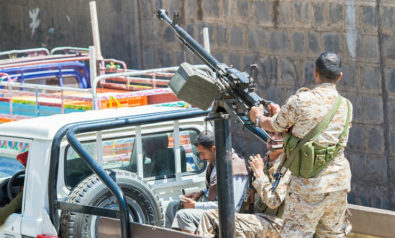
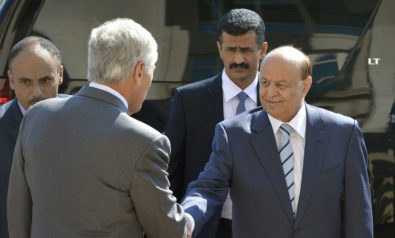


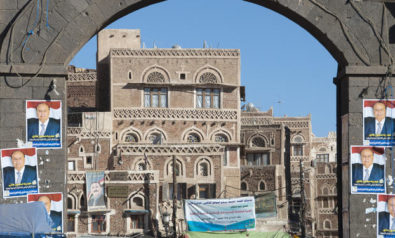
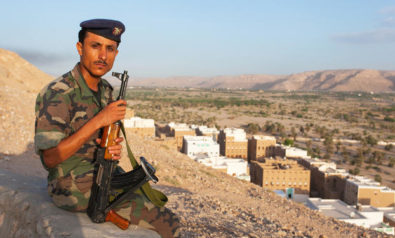

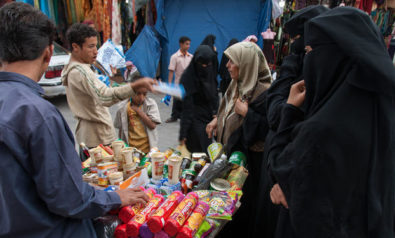
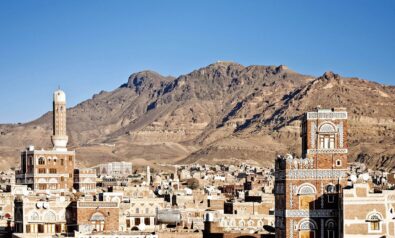


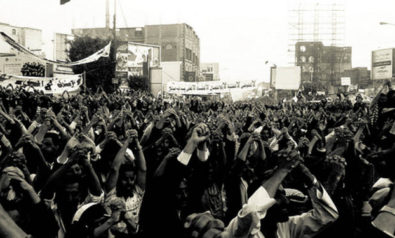

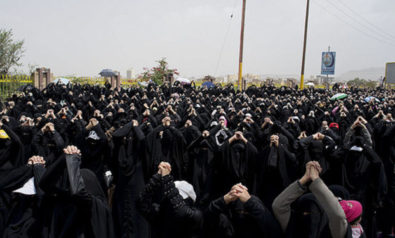
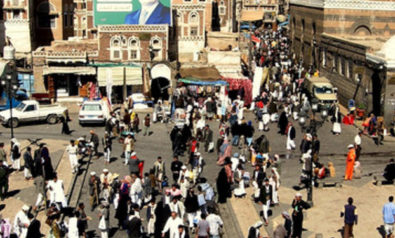

Comment